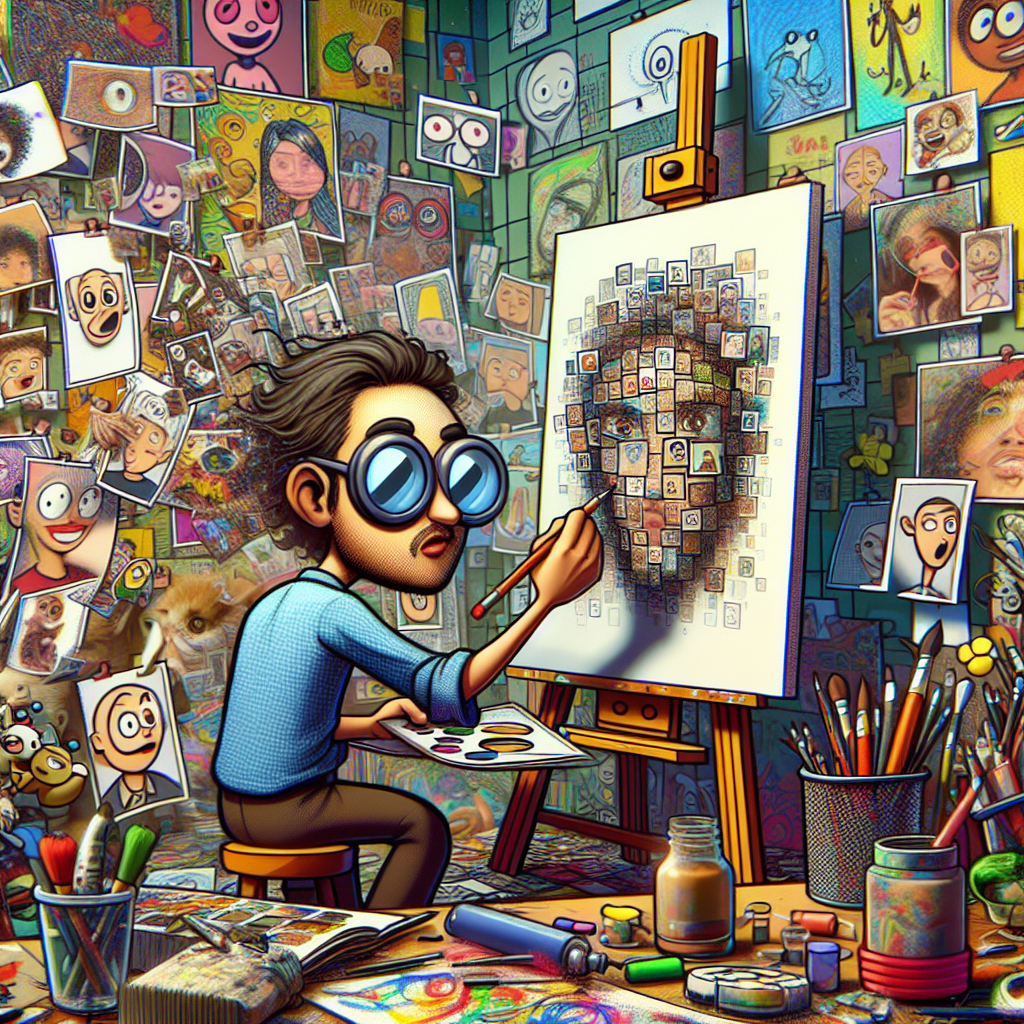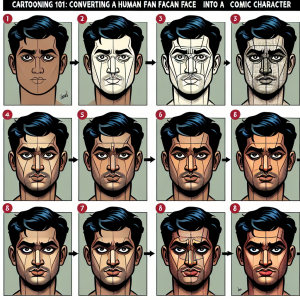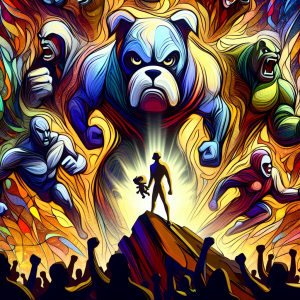Cartooning has been a popular form of creative expression for decades. From comic strips to animated films, cartoons have a way of captivating audiences and bringing characters to life. With the rise of technology and social media, there are now even more ways to explore the art of cartooning, including the use of face filters. In this article, we will explore how face filters can be used as a tool for creative expression and cartooning.
Understanding Face Filters
Face filters are a popular feature on many social media platforms, allowing users to alter their appearance in photos and videos. These filters use augmented reality technology to overlay digital effects onto a person’s face, often incorporating elements such as animal ears, funny glasses, or exaggerated facial features. While face filters are often used for entertainment purposes, they can also be a powerful tool for artistic expression.
The Art of Cartooning
Cartooning is the art of creating humorous or satirical images using exaggerated or simplified forms. It has a long history and has been used in a variety of mediums, including print, animation, and digital media. Cartoons often feature characters with unique and exaggerated features, and they are known for their ability to convey emotion and tell a story in a visually engaging way.
Using Face Filters for Creative Expression
Face filters offer cartoonists a new way to explore their craft and create engaging and unique characters. By using face filters, artists can experiment with different facial features, expressions, and styles, allowing them to bring their characters to life in a fun and interactive way. Face filters also provide an opportunity for artists to connect with audiences in a more personal and relatable way, as they can share their creative process and interact with fans through social media platforms.
Furthermore, face filters can be used as a tool for self-expression and identity exploration. By using filters to alter their appearance, artists can play with different personas and experiment with their own sense of identity. This can be a powerful form of creative exploration and can lead to the development of unique and compelling characters.
Benefits of Using Face Filters for Cartooning
There are several benefits to using face filters as a tool for cartooning and creative expression. Some of these include:
- Accessibility: Face filters are readily available on many social media platforms, making them easily accessible to artists and creators.
- Engagement: Face filters provide an interactive and engaging way to connect with audiences and share the cartooning process in real-time.
- Inspiration: Face filters can inspire new ideas and styles, pushing artists to think outside the box and explore new creative possibilities.
Challenges and Considerations
While face filters offer many opportunities for creative expression, there are also some challenges and considerations to keep in mind. For example, some filters may perpetuate harmful stereotypes or reinforce unrealistic beauty standards. Additionally, there may be limitations to the customization and control over the filter’s effects, which could impact the artist’s ability to fully realize their creative vision.
Experimenting with Face Filters
For artists interested in exploring the art of cartooning through face filters, there are many ways to get started. Experimenting with different filters, styles, and characters can help artists find their unique voice and create compelling and engaging content. Additionally, artists can use face filters as a tool for self-promotion and branding, leveraging the viral nature of social media to reach new audiences and grow their following.
FAQs
Here are some frequently asked questions about using face filters for cartooning:
Can face filters be used for professional cartooning work?
While face filters are often associated with casual and lighthearted use, they can also be incorporated into professional cartooning work. Many artists have used face filters as a tool for character development and personal branding, and some have even incorporated filtered images into their printed or digital artwork.
Are there any copyright or legal considerations when using face filters?
As with any form of digital content, it is important to be mindful of copyright and legal considerations when using face filters for cartooning. Some filters may be protected by copyright, and it is important to respect the rights of the filter creators when using their work in your own creations.
How can I stand out from the crowd when using face filters for cartooning?
With the popularity of face filters on social media, it can be challenging to stand out from the crowd. To make your cartooning work stand out, focus on developing unique characters and storylines that resonate with your audience. Additionally, consider experimenting with different filter styles and effects to create a distinct and memorable visual aesthetic.
In conclusion, the art of cartooning has evolved with the rise of technology and social media, and face filters offer a new and exciting way to explore creative expression. By using face filters as a tool for cartooning, artists can engage with their audience in a more personal and interactive way, expand their creative horizons, and create compelling and memorable characters. Whether for personal enjoyment, professional development, or social media engagement, the use of face filters for cartooning opens up a world of possibilities for artists and creators.








+ There are no comments
Add yours